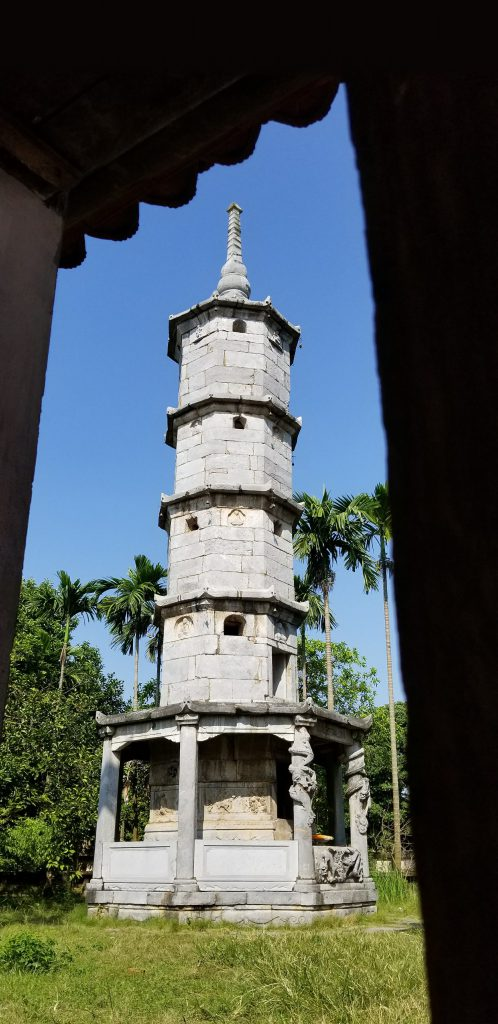
But Thap (Bút Tháp) Pagoda – Testimony of Time
Suppose you are looking for an ancient temple that still has its original architectural structure. Perhaps Pen Thap Pagoda is the best option. Bút Tháp Pagoda is the place to visit if you want to see many artistic masterpieces of sculpture on stone and wood. And, for those with compassion who want to learn more about world philosophy, and the relationship between religion and life, Bút Tháp Pagoda is a must-see.
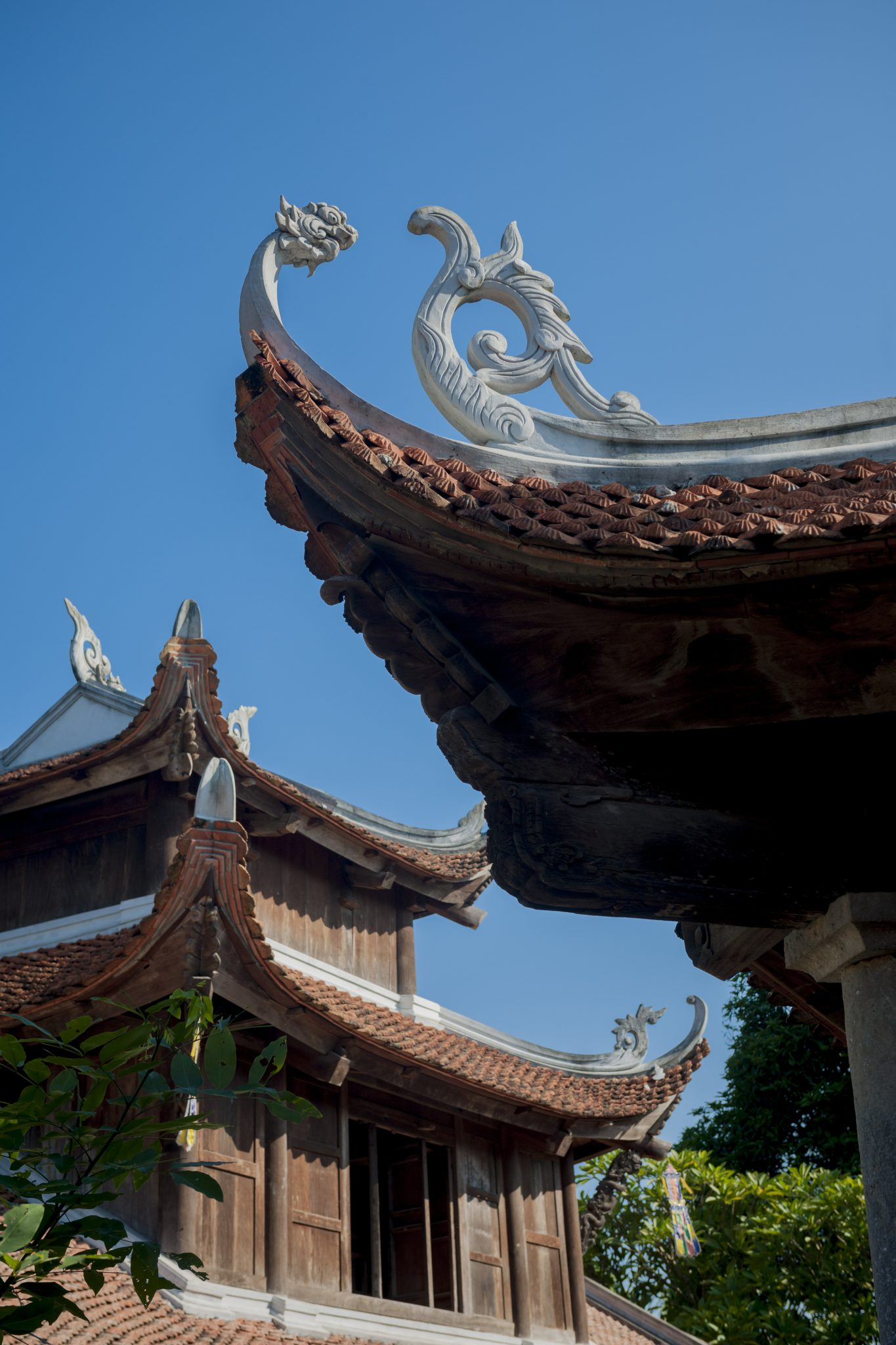 Roof system of the Bút Tháp pagoda
Roof system of the Bút Tháp pagoda
Bút Tháp Pagoda got its name from King Tu Duc (Tự Đức), who came here in 1876 and saw a towering blue stone spire shaped like a pen written in the sky and named it Pen (Bút) Tower. Ninh Phuc Tu (Ninh Phúc Tự) is the name of a pagoda located on the right bank of the Duong (Đuống) River in But Thap (Bút Tháp) village, Dinh To (Đình Tổ) commune, Thuan Thanh (Thuận Thành) district, Bac Ninh (Bắc Ninh) province. Because many terns come to nest on the tower, the people in the area are also known as Nhan Thap (Nhạn Tháp) Pagoda.
According to legend, the temple was built by King Tran Thanh Tong (Trần Thánh Tông) (1258-1278). The pagoda's current architectural scale was embellished by Empress Dowager Trinh Thi Ngoc Truc and her daughter Princess Le Thi Ngoc Duyen after many ups and downs in history and many renovations. The pagoda bears a distinct imprint of architectural art and sculpture from the 17th-century Le - Trinh period. The entire architectural space of the temple is divided into three sections. The first section includes the Tam Quan and the fully open steeple, which is thought to be a place where sentient beings can access the Tao. Part 2 is a formal, tightly enclosed space for cultivation. Part 3 is a system of towers that rise high and escape from the campus, demonstrating escapism. The architectural scale has a rhythm of ups and downs, sometimes calm, sometimes undulating, with high accents, resulting in architectural instrumental music about human life that appears to be accidental but intentional.
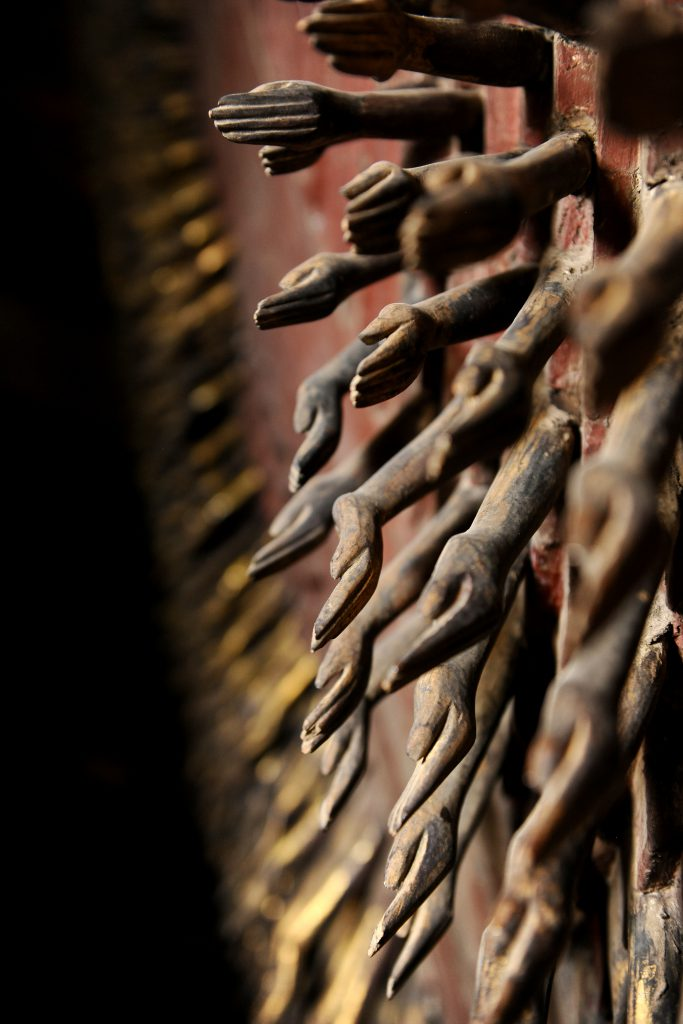 The arms of the Bodhisattva statue
The arms of the Bodhisattva statue
But Thap Pagoda is home to a unique treasure. That is the Quan Âm Thiên Thủ Thiên Nhãn statue, a Vietnamese sculpture masterpiece. The statue is 3.7m tall and 2.1m across, with 11 heads, 46 large hands and 954 small hands, and an eye in the palm of each hand. All to emphasize the Bodhisattva Quan Thế Âm's infinite ability to observe all worldly things and assist sentient beings in attaining enlightenment. The sculptor Zhang worked on the statue for ten years and finished it in 1656. The pagoda's upper hall is lavishly decorated with statues of the Three Worlds and bodhisattvas such as Thich Ca Tuyet Son, Van Thuy, Pho Hien, and others as well as two rows of 18 Arhats (La Hán). It is worth noting that the statues, altars, incense sticks, and wooden reliefs are carved with phoenix dragons on the incense burner's rafters... All of these excellent works of sculpture and painting art have been identified by researchers as being early and typical in the history of Buddhist sculpture in Vietnam. Around the upper hall is a stone railing with 26 carved reliefs, including spirit beasts and beautiful scenes of the country's nature.
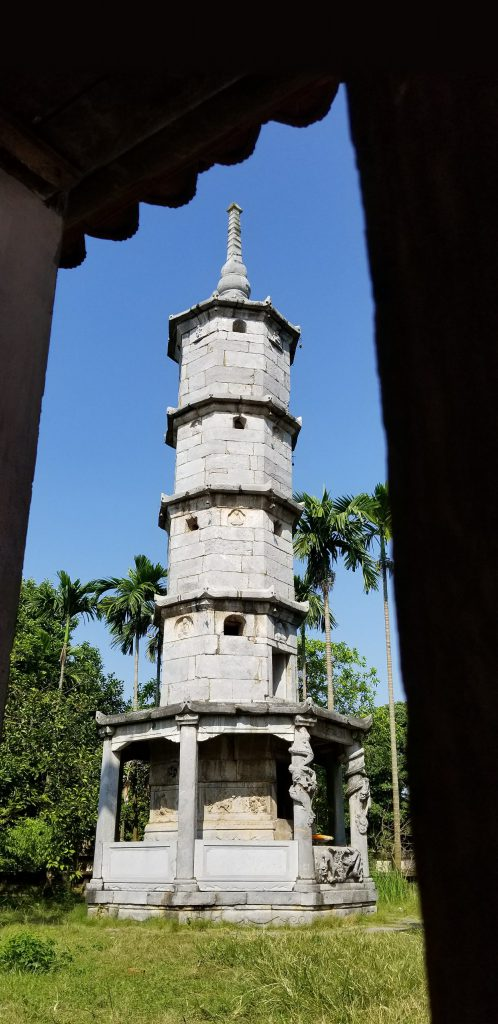 Bao Nghiem (Báo Nghiêm) Tower
Bao Nghiem (Báo Nghiêm) Tower
The transition space between the upper hall considered the Buddha realm, and the back of the road, considered the world of monks, is a 4m long curved stone bridge consisting of 3 spans squeezed over the lotus lake, with 12 stone reliefs touching animals, lively flowers full of improvisation on both sides of the bridge. Behind the stone, the bridge is the Tich Thien Am (Tích Thiện Am) building, which houses a wooden nine-flowered tree with nine floors and eight sides, representing the nine levels of Buddhist cultivation. Because the nine flowers rotate around the axis, they are commonly referred to as the sutra mill, an endemic tool in tantric cultivation.
The project on the stone bridge, the Upper Hall corridor, and the typical Bao Nghiem Tower, the burial place of the Zhejiang Zen master, are all engraved on the stone of Bút Tháp Pagoda. The tower is entirely made of snug stone, with no plastering. There are 23 stone carvings, concentrated at the foot of the parapet, the first and second floors, and the two pillars of the tower, to a level of sophistication rarely seen in our country's ancient temple system.
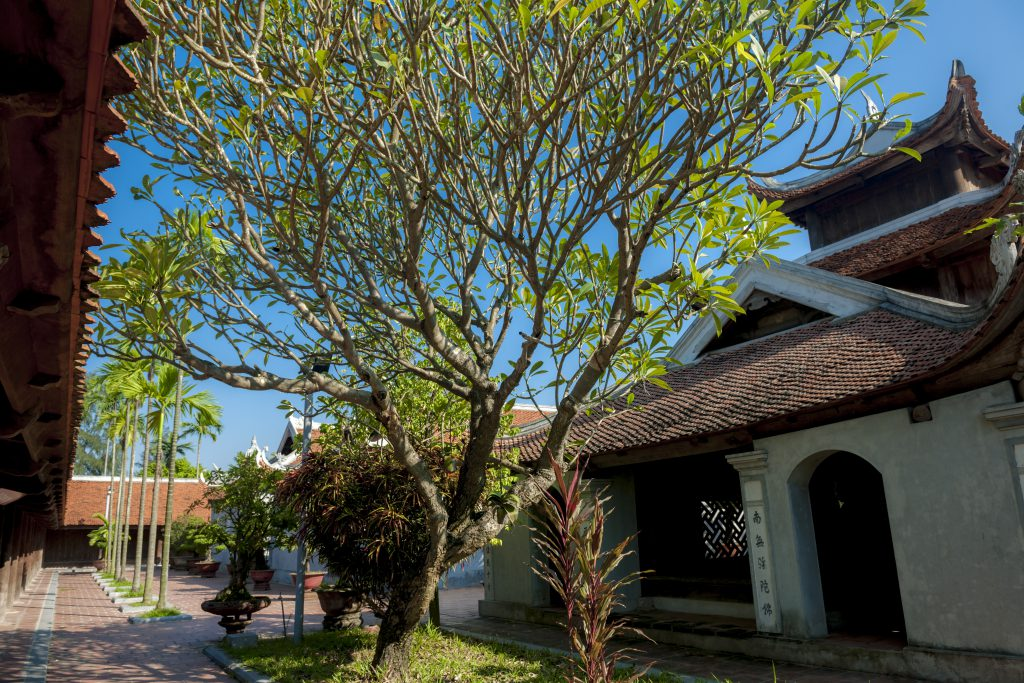 Bút Tháp Pagoda in the spring.
Bút Tháp Pagoda in the spring.
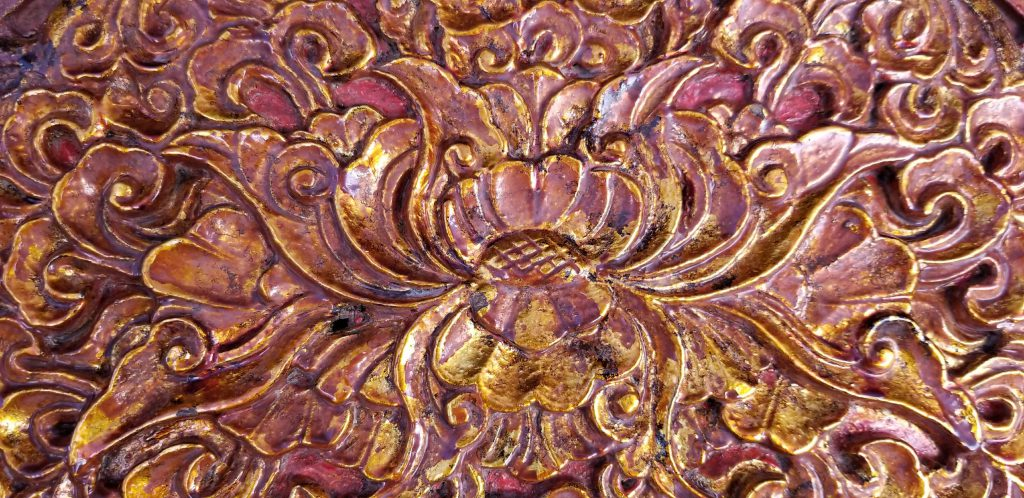 Chrysanthemum decoration on the upper court's wooden collapse
Chrysanthemum decoration on the upper court's wooden collapse
 The Cuu Pham Lien Hoa (Cửu PhẩmLiên Hoa) Building is a valuable Bút Tháp Pagoda heritage.
The Cuu Pham Lien Hoa (Cửu PhẩmLiên Hoa) Building is a valuable Bút Tháp Pagoda heritage.
Many things have been deposited by the history of Bút Tháp Pagoda; the ancients have left us a beautiful architectural work, a rich treasure of intangible heritage, containing many human philosophies of human life. Currently, the Pen Thap Pagoda special national monument is not only a place to preserve those precious values, but also a destination that draws the attention of a large number of tourists and scholars interested in learning about the cultural history of the ancient Kinh Bac (Kinh Bắc) region.
Source: Lê Hoàng